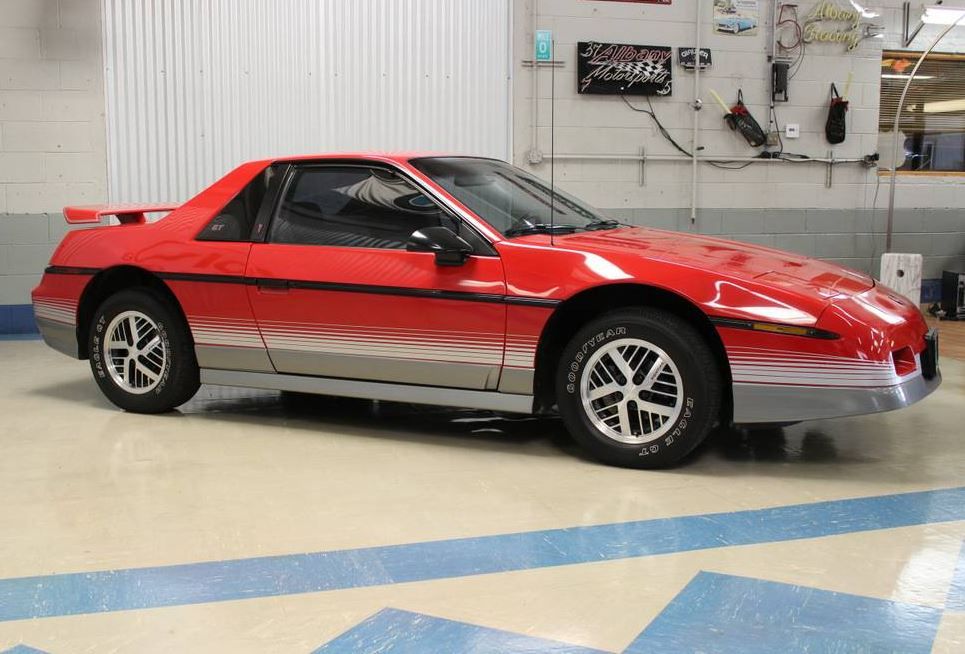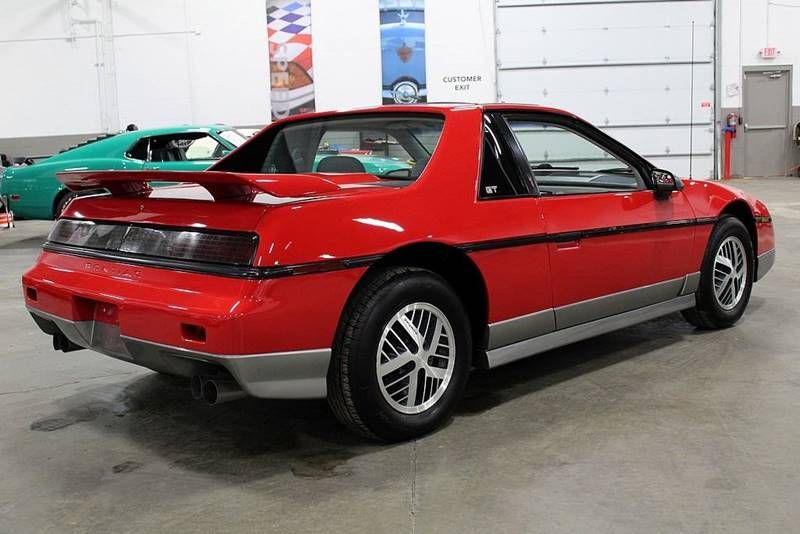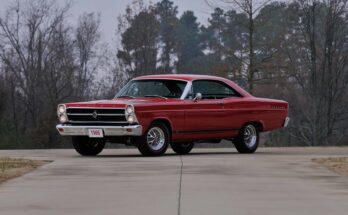
The 1985 Pontiac Fiero GT Coupe continues to capture the attention of automotive enthusiasts and collectors, cementing its status as an iconic piece of 1980s American automotive history. Introduced as Pontiac’s bold venture into the mid-engine sports car market, the 1985 Fiero GT marked a significant evolution for the model, addressing early criticisms and delivering a sportier, more refined driving experience.
Launched in 1984, the Pontiac Fiero was General Motors’ first mass-produced mid-engine car, designed as an affordable, stylish alternative to competitors like the Toyota MR2 and Chevrolet Corvette. The 1985 model year brought the highly anticipated GT trim, which debuted with a more powerful 2.8-liter V6 engine, producing 140 horsepower and 170 pound-feet of torque—a substantial upgrade over the base model’s 2.5-liter inline-four Iron Duke engine, which was criticized for its lackluster 92-horsepower output. The GT also featured a distinctive new look with revised front and rear fascias, a WS6 sport suspension for improved handling, and the option of a five-speed manual transmission from Isuzu, making it a more compelling choice for performance-minded buyers.
“The 1985 Fiero GT was Pontiac’s answer to those who wanted more from the Fiero,” said automotive historian Laura Kendrick. “It wasn’t just a commuter car anymore; it was a legitimate sports car with a unique mid-engine layout that set it apart in the American market.”Recent listings highlight the Fiero GT’s growing appeal among collectors. A remarkably preserved 1985 Fiero GT with just 941 miles on the odometer was recently offered for $25,000 at Gateway Classic Cars in Detroit, showcasing the premium low-mileage examples can command. Another GT, listed on eBay with a starting bid of $500, drew attention as a potential restoration project despite its weathered paint and overheating issues, underscoring the model’s enduring enthusiast base. Experts note that while pristine examples fetch high prices, project cars remain accessible, with a robust community of Fiero owners ready to support restoration efforts.
However, the Fiero’s early years weren’t without controversy. The 1984 models faced scrutiny due to engine fires linked to faulty oil systems and cooling issues, tarnishing the car’s reputation. By 1985, Pontiac addressed these concerns with a larger oil pan, improved electrics, and a revised cooling system, significantly reducing the risk of fires. According to industry reports, the V6-powered GT models had a cleaner safety record, helping to restore confidence in the lineup.Despite its improvements, the Fiero faced challenges. General Motors’ internal politics, particularly efforts to protect the Corvette’s market position, limited the Fiero’s performance potential. The car’s innovative plastic body panels and space-frame monocoque design were praised for their forward-thinking approach but also led to its use in kit car conversions, sometimes overshadowing its originality. By 1988, the Fiero had evolved into a refined sports car with a new multilink rear suspension, but declining sales—26,401 units in its final year—led to its discontinuation.
Today, the 1985 Pontiac Fiero GT is celebrated for its bold design and place in automotive history. “It’s a car that dared to be different,” said Kendrick. “For those who love the ‘80s aesthetic and the idea of an affordable mid-engine classic, the Fiero GT is hard to beat.” As values for clean examples climb—some fetching over $30,000 at auction—the Fiero GT continues to light a spark among those seeking a nostalgic, analog driving experience.For collectors and enthusiasts, the 1985 Fiero GT remains a symbol of Pontiac’s ambition and a reminder of what could have been, had the car been given more time to shine.



